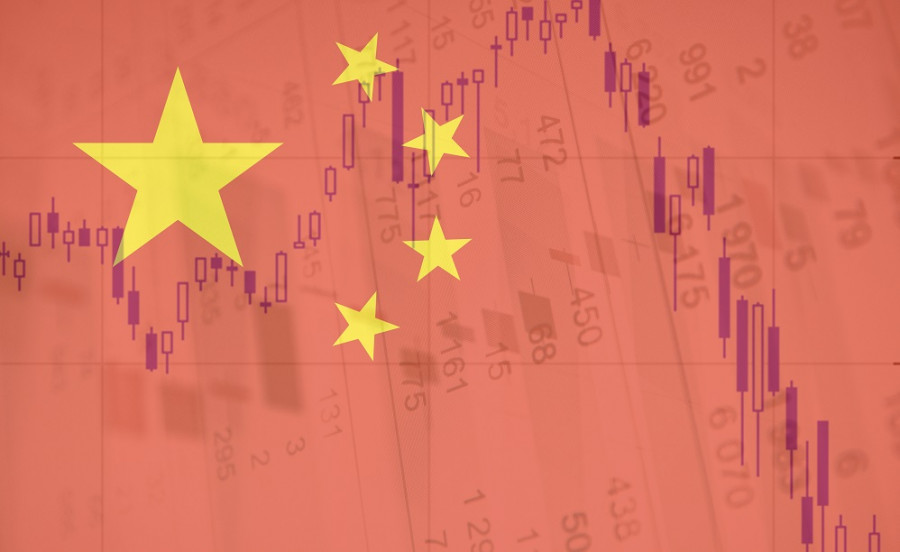On Wednesday, the EUR/USD pair is trying to start a corrective phase after falling towards the 1.07 level. Thanks to the surge in risk-off sentiment, the greenback strengthened its position across the board, and the EUR/USD pair hit a three-month price low. Typically, after such impulsive one-sided movements, we see a corrective pullback (which we observed on Wednesday). Afterward, events unfold according to one of two scenarios: either the trend resumes (in our case, to the downside), or the pair drifts sideways in a new price range. In my opinion, the latter scenario is more likely. In anticipation of the European Central Bank meeting in September, which will take place next week, traders (both bears and bulls) are likely to take a defensive stance, marking new limits for the price range - 1.0700-1.0800. In other words, while the pair has traded within the 1.08 level for the past four weeks (excluding impulsive moves towards 1.09 and 1.07), market participants have now shifted to a lower price range.
If this assumption is correct, we can expect a pointless and rather dull back-and-forth movement within the 1.07 level until the ECB meeting. Bears will try to pull the price down to the 1.0700 mark, while bulls will try to climb above the 1.0800 target.

At present, the market's primary focus is on concerns about the Chinese economy and global growth. Currency strategists at major financial conglomerates refer to the "China factor" as the primary driver behind the dollar's broad strength. However, one might wonder why the financial world has suddenly become so worried (or more appropriately, "alarmed") about the prospects of Chinese growth, especially when weak economic reports from China have been coming out in July and August.
There is no single consensus among experts on this matter, but in my opinion, there isn't a single cause; there are several. First, it's the cumulative effect of a series of disappointing reports from China. Second, it's the relatively sharp depreciation of the yuan (the USD/CNY pair reached a 10-month high but is currently correcting due to the activity of China's state banks). Third, it's the unexpected decision by China's President Xi Jinping to abstain from participating in the upcoming G20 summit in India. The last one has more of a conspiratorial aspect, but given the other circumstances, it also plays a role, especially since some international media outlets still associate Xi's decision with China's economic troubles.
For instance, according to Japan's Nikkei, the Chinese leader won't attend the forum "out of concerns that he may be asked direct questions about the poor performance of the Chinese economy." The article, like its counterparts at The Wall Street Journal, points out serious issues in China's real estate sector, with Evergrande Group, the largest property developer, as its symbol. In addition, according to the Nikkei, youth unemployment in the country has risen to such an extent that Chinese authorities have stopped publishing relevant data. Underwhelming China macro data have added to woes with its weak GDP growth in China, disappointing foreign trade and industrial figures, "red-colored" PMIs, and so on. Despite seeing these reports for the past two months, serious discussions about China's economic slowdown have only started now. To be more precise, alarm bells have started ringing, thereby providing support to the safe-haven dollar.
The bears are benefiting from the current situation, and one might say they are enjoying a "double advantage." First, the pair is under pressure amid the risk-off sentiment. The safe-haven greenback is in demand due to a flight to safety. Second, the "China factor" indirectly dampens hawkish expectations regarding the ECB's future course of actions. Currently, the likelihood of a rate hike at the September meeting is less than 30%. Moreover, according to some experts, the ECB may be forced to lower rates in the first half of 2024, given the global slowdown. While some ECB officials still show a hawkish stance (for example, Klaas Knot, who stated that markets do not fully assess the likelihood of a rate hike in September), overall, skepticism prevails among experts regarding the prospects of further rate hikes.
In general, the current fundamental backdrop allows EUR/USD bears to maintain control of the situation, but it does not (yet) allow for another downward breakthrough, this time into the 1.06 handle. Considering this disposition, it's not advisable to consider long positions as the risks are too significant. Instead, one should look for opportunities to sell either on corrective pullbacks or after sellers settle below the support level at 1.0705 (the lower Bollinger Bands line on the daily chart). In that case, the next target for the bearish movement would be the 1.0640 level, which is the lower Bollinger Bands line on the weekly chart.
The material has been provided by InstaForex Company - www.instaforex.comfrom Forex analysis review https://ift.tt/pJmtaKb
via IFTTT
